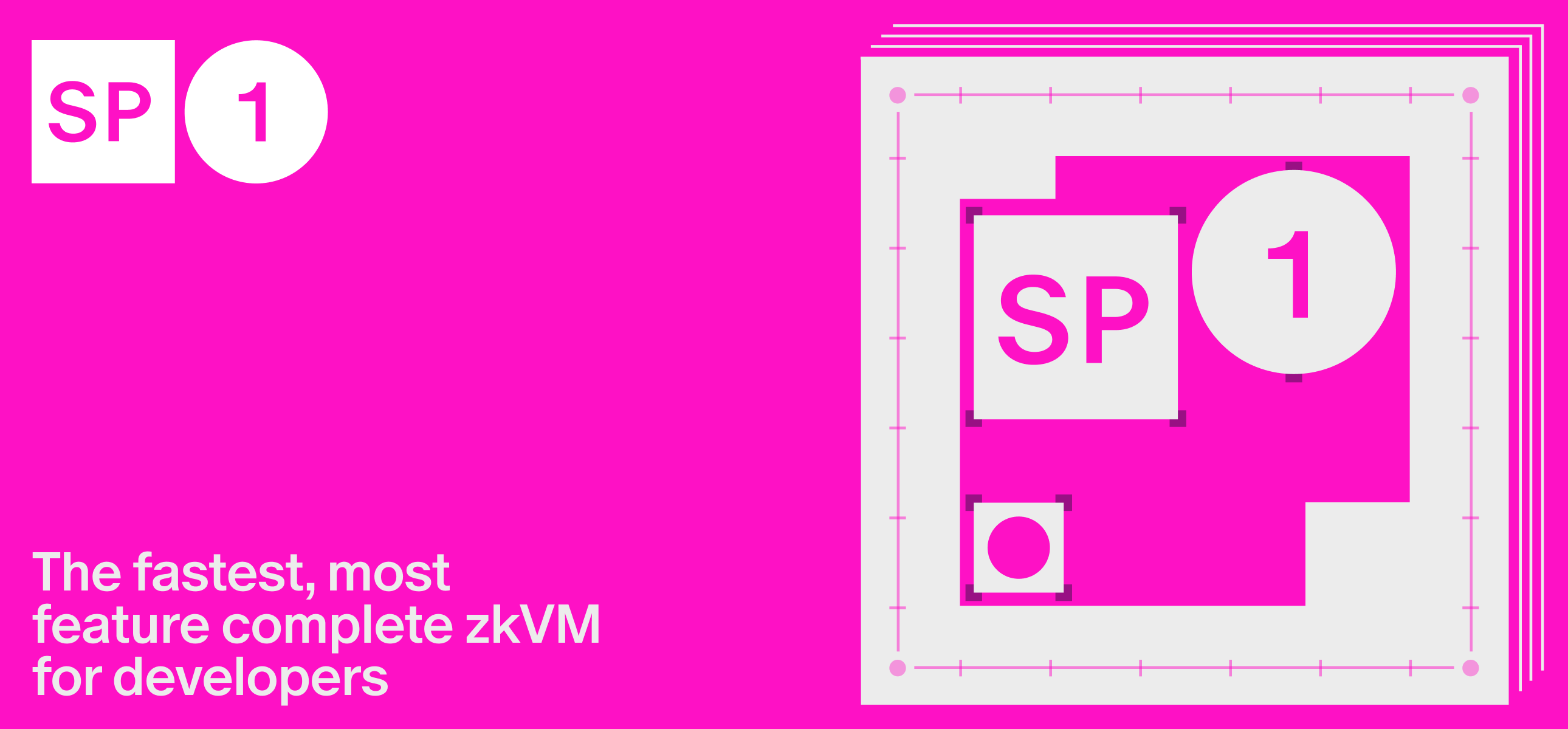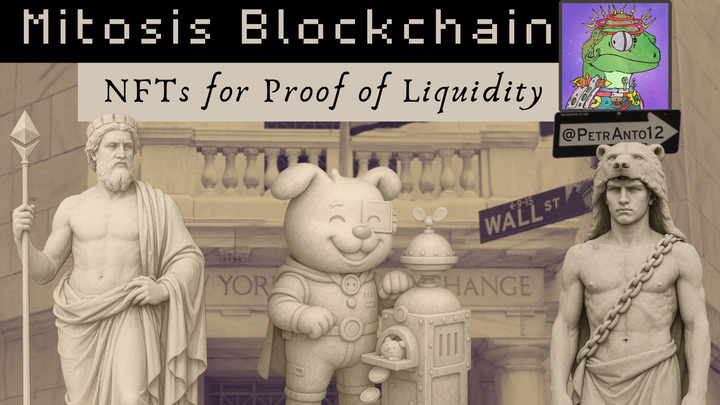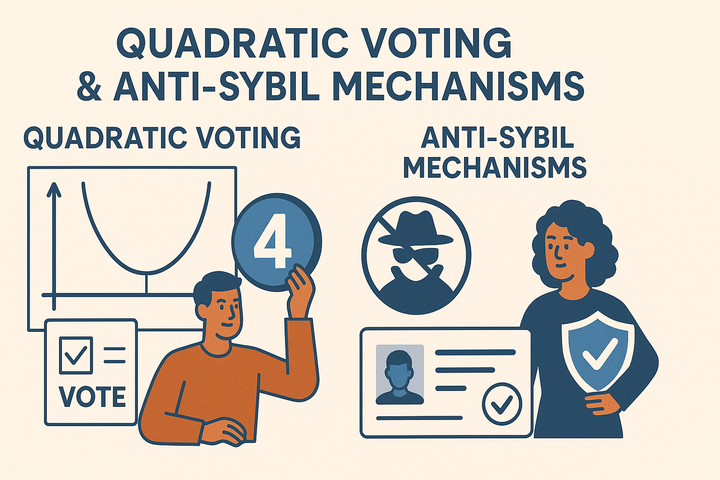Succinct SP1 zkVM: Democratizing Zero-Knowledge Proofs for Rust Developers

Introduction
In the rapidly evolving landscape of blockchain technology, zero-knowledge proofs (ZKPs) have emerged as a cornerstone for enhancing privacy, scalability, and security. These cryptographic protocols allow one party to prove the validity of a statement without revealing any underlying data, making them invaluable for applications like blockchain rollups, cross-chain bridges, and privacy-preserving smart contracts. However, the complexity of ZKP development has historically been a barrier, requiring specialized cryptographic expertise and years of development time.
Succinct Processor 1 (SP1), a groundbreaking zero-knowledge virtual machine (zkVM) is revolutionizing ZKP development by making it accessible to Rust developers. Let’s take a deep dive into how SP1 simplifies ZKP creation, its technical innovations, and its impact on the blockchain ecosystem, with a focus on empowering Rust developers.

What are Zero-Knowledge Proofs and zkVMs?
Zero-knowledge proofs, first introduced in the 1985 paper "The Knowledge Complexity of Interactive Proof Systems," enable verifiable computation without disclosing sensitive information. In blockchain, ZKPs are critical for scaling solutions like rollups, which compress thousands of transactions into a single proof, and for privacy applications, such as confidential transactions. However, traditional ZKP development involves designing custom circuits, a process often described as "moon math" due to its complexity and inaccessibility.
A zkVM addresses this challenge by abstracting the cryptographic intricacies, allowing developers to write programs in high-level languages and generate proofs of their execution. SP1, developed by Succinct Labs, is a general-purpose zkVM that verifies the execution of programs written in Rust or any LLVM-compiled language. By leveraging Rust, a language prized for its performance, safety, and vibrant ecosystem SP1 lowers the entry barrier for developers, enabling them to create ZKP applications without deep cryptographic knowledge.
The SP1 Advantage: Simplifying ZKP Development
SP1’s core innovation lies in its developer-friendly approach, which aligns with the ethos of making ZKPs mainstream. Here’s how SP1 empowers Rust developers:
- Writing ZKPs in Familiar Rust Code Unlike traditional ZKP frameworks that require developers to learn specialized languages or design custom circuits, SP1 allows developers to write ZKP logic using standard Rust code. This compatibility extends to Rust’s extensive ecosystem, including crates like `revm`, `reth`,`alloy`, `tendermint-rs`, and `serde`. For example, a developer can import the `revm` crate to build a zkEVM (zero-knowledge Ethereum Virtual Machine) or use `tendermint-rs` for a light client, all within SP1’s zkVM. This approach significantly reduces development time. Succinct Labs estimates that SP1 cuts development effort by over 100 times compared to custom circuit methods, as developers can reuse existing, audited libraries rather than building solutions from scratch. For Rust developers, this means leveraging familiar tools and workflows to create complex ZKP applications, such as rollups or cross-chain bridges, in days or weeks instead of years.
2. Seamless Compilation to RISC-V
SP1 compiles Rust programs to the RISC-V instruction set architecture (ISA), a standard compilation target for Rust. Using the `cargo prove` CLI tool, developers can generate a RISC-V ELF (Executable and Linkable Format) file, which SP1 then proves using a STARK (Scalable Transparent Argument of Knowledge) proof system. This process is transparent to the developer, who only needs to write Rust code and run the provided toolchain.
The use of RISC-V is strategic, as it’s an open-standard ISA with growing adoption in blockchain and beyond. By targeting RISC-V, SP1 ensures compatibility with a wide range of programs and facilitates future integration with other ecosystems, such as Ethereum, where RISC-V compatibility could enable native zkVM execution.
- Open-Source and Community-Driven SP1 is 100% open-source under the MIT license, fostering transparency and collaboration. The source code, available at `https://github.com/succinctlabs/sp1`, has attracted contributions from developers at Polygon, Celestia, Sovereign Labs, and others. This community-driven approach mirrors the Linux project, where diverse contributors enhance a shared infrastructure. The open-source nature also enhances security. SP1 has undergone audits by leading ZK security firms like Veridise, Cantina, and KALOS, with a public audit competition revealing zero critical vulnerabilities. For Rust developers, this means access to a production-ready, secure zkVM that they can customize or extend with confidence.
Technical Innovations Driving SP1’s Performance
SP1 isn’t just about accessibility, it’s also a performance leader, outpacing competitors like RISC Zero by 4 to 28 times on blockchain workloads. Its technical innovations make it a game-changer for Rust developers building scalable ZKP applications.
- Precompile-Centric Architecture
SP1’s precompile system accelerates common cryptographic operations, such as `secp256k1` and `ed25519` signature verification, `sha256` and `keccak256` hashing, and elliptic curve operations. These precompiles reduce RISC-V cycle counts by 5–10 times, slashing proof generation times. Developers can also implement custom precompiles, tailoring SP1 to specific use cases.
This architecture has become an industry standard, influencing projects like RISC0, Valida, Nexus, and Jolt. For Rust developers, it means faster proofs without sacrificing the flexibility of a general-purpose zkVM.
2. Efficient Memory Management
SP1 employs a novel “shared challenges” technique to segment large computations into manageable shards, which are then combined into a global proof. Its memory proof method ensures consistency across proofs with a single challenge, avoiding the overhead of Merkleized memory. This efficiency is critical for blockchain applications like rollups, where memory-intensive computations are common.
- STARK Recursion and SNARK Wrapping
SP1 uses performant STARK recursion to prove arbitrarily long programs and a STARK-to-SNARK wrapping system for efficient on-chain verification. On Ethereum, verifying an SP1 proof costs approximately 275,000 gas, making it cost-effective for real-world use. This combination allows Rust developers to deploy ZKP applications across EVM-compatible chains, Solana, and beyond.
- GPU Prover and Prover Network
SP1’s GPU prover delivers market-leading speed and cost, with proof costs as low as $0.01–$0.02 per transaction on Ethereum. The Succinct Prover Network, a decentralized infrastructure, parallelizes proof generation, eliminating the need for developers to manage complex setups. For Rust developers, this means focusing on application logic while SP1 handles the heavy lifting.
Real-World Impact: SP1 in Production
SP1 is already securing over $1 billion in total value locked (TVL) and powering critical infrastructure for top blockchain projects:
- Polygon: SP1 drives the AggLayer’s pessimistic proofs, ensuring secure cross-chain interoperability.
- Celestia: SP1 powers Blobstream, bridging data availability to Ethereum.
- OP Succinct: Integrates ZKPs into the OP Stack, enabling type-1 zkEVM rollups with proof costs of $0.01–$0.02.
- Solana: SP1’s Solana verifier supports scalability and privacy use cases, such as ZK KYC and rollups.
These deployments demonstrate SP1’s production-readiness and versatility. For Rust developers, SP1 opens doors to building cutting-edge blockchain applications without the traditional barriers of ZKP development.
Challenges and Future Directions
While SP1 is a leap forward, it’s not without challenges. Its alpha stage initially lacked recursion and on-chain verification, limiting early use cases. However, recent updates, including SP1 Turbo (v4.0.0), have addressed these gaps, delivering significant performance improvements. As SP1 evolves, developers can expect further optimizations and support for additional LLVM-compiled languages like C++, Swift, and Julia. The broader adoption of SP1 also depends on the Rust ecosystem’s growth in blockchain. While Rust is popular for its safety and performance, some developers may need to upskill to leverage SP1 fully. Fortunately, Succinct Labs provides comprehensive documentation and CLI tools like `sp1up` and `cargo prove` to ease the learning curve. Looking ahead, SP1’s vision is to make ZKPs ubiquitous, enabling a future where all blockchain infrastructure—rollups, bridges, coprocessors—relies on verifiable computation. Its integration with Ethereum’s potential RISC-V adoption could further accelerate this shift, making SP1 a native solution for zkVM-based scaling.
Conclusion
A New Era for Rust Developers
Succinct SP1 zkVM is a transformative force in the ZKP landscape, democratizing access to zero-knowledge proofs for Rust developers. By allowing developers to write standard Rust code, leveraging existing crates, and benefiting from a high-performance, open-source zkVM, SP1 eliminates the need for specialized cryptographic expertise. Its technical innovations—precompiles, efficient memory management, STARK recursion, and GPU proving—deliver unparalleled speed and cost-efficiency, making ZKPs practical for real-world blockchain applications.
SP1 is the first zkVM to be 100% open-source (MIT / Apache 2.0) with no code obfuscation and built to be contributor friendly—Succint Labs
For Rust developers, SP1 is a gateway to building scalable, secure, and private blockchain solutions, from zkEVM rollups to cross-chain bridges. As SP1 continues to evolve and gain traction among industry leaders like Polygon and Celestia, it’s poised to usher in a new era of verifiability, where ZKPs are as accessible as writing Rust code. In a world increasingly reliant on truth over trust, SP1 empowers Rust developers to shape the future of blockchain infrastructure.
Dive deeper on Succint SP1 🍡 https://docs.succinct.xyz/ https://succinct.xyz/
Also for more informative content like this keep up with mitosis university: https://university.mitosis.org/



Comments ()